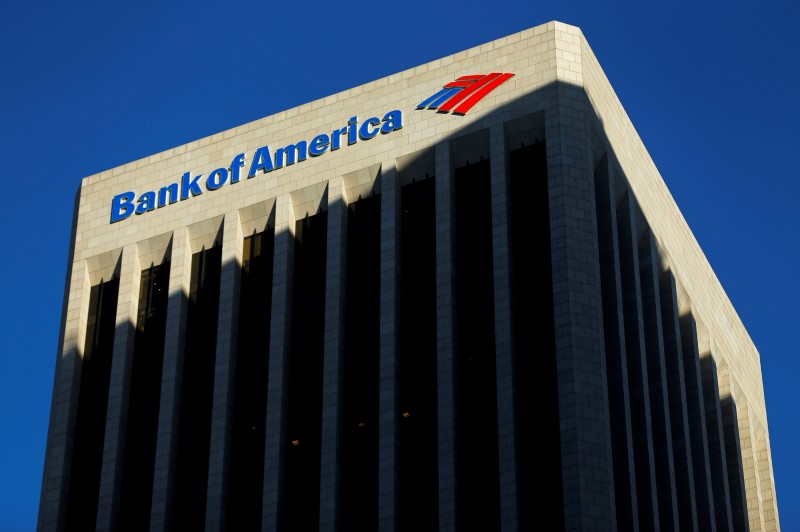By Patrick Rucker and Kouichi Shirayanagi
WASHINGTON (Reuters) - Years of stubbornly low interest rates and expectations they will remain low for years to come have prompted U.S. banks to shift their balance sheets in ways that put them at risk if rates suddenly spike, regulators are warning.
Banks have been stocking up on long-term loans, often tied to real estate and property development that promise higher yields than the miniscule returns on short-term debt.
However, the widening gap between long-term loans and mostly short-term funding means higher interest rates could trap banks in a corner: forcing them to pay more to cover their immediate financing needs than they earn on their loans.
The dynamic "raises the interest rate risk issue that we are very focused on," Martin Gruenberg, chairman of the Federal Deposit Insurance Corporation(FDIC), said this week.
Banks are broadly positioned according to the signals the Federal Reserve has been sending — that it will lift rates only gradually and spread the increases over a long period.
Regulators point out, though, that central banks can move quickly too, even if that now appears unlikely. Short-term rates could also climb in a weakening economy, they say.
"(There) could be impacts on the economy apart from monetary policy," Gruenberg said.
The Office of Financial Research, an independent watchdog within the Treasury Department, says banks could be tested by a surprise upheaval like the recent Brexit vote.
"Investors (are) open to heavy losses from large jumps in interest rates, whether from surprises in the Federal Reserve's monetary policy or other shocks," the OFR wrote in a recent report.
The Office of the Comptroller of the Currency also counts interest rate risk among market perils.
This week, Boston Fed president Eric Rosengren warned that banks might already be too exposed to long-term, commercial real estate that could sour and hit the broader economy.
The savings and loan crisis of the 1980s and the early 1990s was the most prominent U.S. example how a spike in short-term rates could wreak havoc in the financial industry.
When the Fed pushed its benchmark rate above 19 percent in the early 1980s, many lenders switched to riskier credits to keep up with a spike in costs. Those loans later soured and contributed to the collapse of hundreds of lenders.
Most recently, banks got a glimpse of the risks of rate swings in June 2013 when then-Fed Chairman Ben Bernanke suggested that the central bank could start scaling back its government debt purchases. As bond yields whipsawed in response, banks saw their long term assets briefly lose billions of dollars in value.
Even so, banks have been extending the duration of their loans since the Fed pegged its rates near zero in late 2008, assuming that rates will stay low for some time.
FDIC data shows roughly a quarter of the loans on bank balance sheets will not mature for at least five years – a record level - and many lenders remain comfortable offering long-term loans to bolster earnings. (Graphic: http://tmsnrt.rs/2bnEjZA)
"We are relatively convinced that we may not be this low forever, but...our expectation is lower for longer," Wells Fargo's finance chief, John Shrewsberry, said last month.
Regulators do not require banks to set aside capital for potential losses if interest rates rise and let them use their own models to calcuate risks, so approaches vary across the industry.
While JPMorgan Chase & Co (N:JPM), the nation's largest lender, has lately increased its protection against rising rates, Bank of America Corp (N:BAC), the nation's No. 2 lender, has been steadily paring it back.(Graphic: http://tmsnrt.rs/2bVLmXk)
CRYING WOLF?
Analysts say it is difficult to tell whether regulators see risks that banks do not or whether they are just doing their job - worrying about a threat that may never materialize.
Government-backed lenders, though, have also been nudging banks to better prepare for eventual rate hikes.
"We've had eight years of low rates. And the bank model - relying on core deposits - has not been tested," said Robert Dozier of the Federal Home Loan Bank of Atlanta.
Analysts point to Bank of America as a lender bearing the brunt of low rates.
But as the bank has delved deeper into long-term assets, the lender has shrunk its book of certain interest rate derivatives to below $400 billion from $1 trillion in the last three years, according to FDIC data. Bank of America says that any hit it takes on a rate spike would quickly be offset by new loans made at higher rates.
"We constantly evaluate the trade-offs between earnings, interest rate risk, capital and liquidity," said spokesman Jerome Dubrowski.
Bank of America could save about $20 billion over the next two years now that it has dropped some of those hedges, according to Rob Pratt of Harbor Derivatives who brokers some of those same swaps.
But the lender may wish that it had held onto those hedges if interest rates do climb quickly, said David Hendler, a bank analyst with Viola Risk Advisors of New York.
The bank can buy more of those swaps later but they might be more costly.

"That's the thing about insurance: you'll pay more when you need it most," said Hendler.